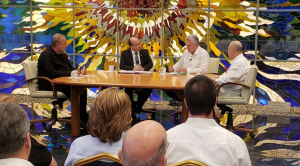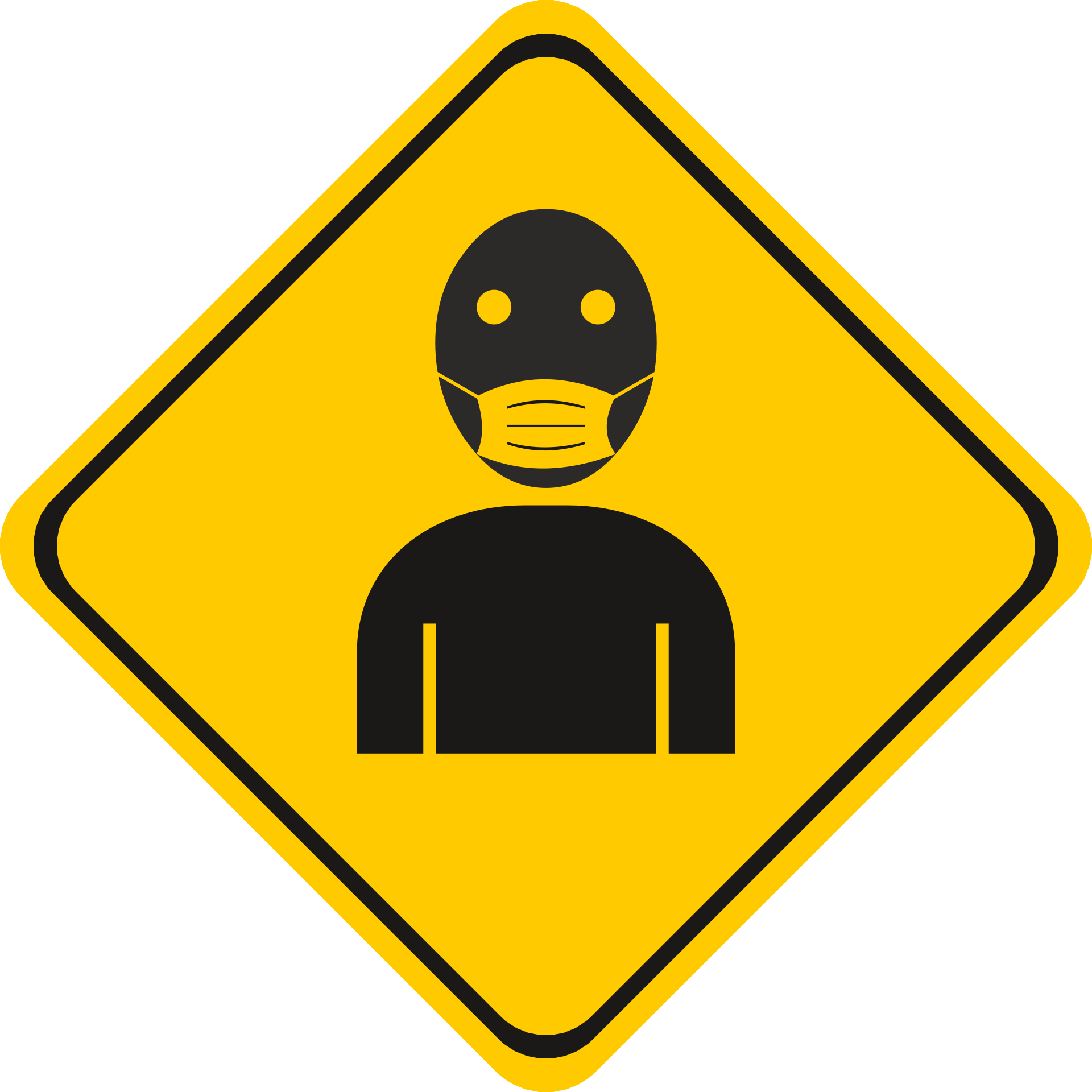
CUBA STANDARD — Joining countries around the globe, Cuba on March 20 barred the entry of non-citizens to the island and imposed social-distancing measures.
President Miguel Díaz-Canel, joined by his prime minister and cabinet ministers, made the announcement live on the Mesa Redonda show.
As of March 20, there were 21 confirmed COVID-19 patients and one death, an Italian tourist with a pre-existing condition. Hundreds of people are in isolation centers across the island under observation. The situation continues to be fluid, as new patients are admitted, and those who tested negative are released.
The day after the first three COVID-19 cases were confirmed in Cuba, the Council of Ministers changed its coronavirus prevention and detection plan, which was originally approved in January.
Former President Raúl Castro, who is in charge of the plan, said on March 14 that Cuba’s health system was “ready”. Three labs in Havana, Santa Clara and Santiago are equipped with cutting-edge PCR technology that can offer test results within 24 hours, but it isn’t clear whether Cuba has the capacity to keep up with testing as the numbers increase. Cuba says it has drugs for treatment, including Interferon B. According to official media, a state enterprise in Sancti Spíritus began manufacturing masks from fabric it normally uses to make pants for school uniforms. Cuba’s Ministry of Health also posted a video on YouTube showing Cubans how to make their own masks.
As of March 20, China was preparing delivery of unspecified crisis supplies to Cuba, as part of Chinese aid to countries around the globe.
While stepping up surveillance and control measures at airports and marinas, until March 20 Cuban authorities did not impose any travel bans, lockdowns or school closings, arguing that there had been no community spread and that all COVID-19 patients in Cuba had been infected abroad. While all major events have been canceled, social distancing was not on top on the agenda; local Communist Party or university meetings, for instance, continued.
Impact on tourism
Before the travel ban, the tourism ministry, in coordination with the health ministry, said it was taking 84 measures for prevention and control, including training for all tourism industry personnel that began in early February. The main aim was to reduce the number of coronavirus-positive travelers entering the country, be ready to treat those already in the country, and prevent the spread in Cuba.
A Cuban tourism ministry official told Cubadebate March 14 that “some tourists have expressed their preference to weather the pandemic in Cuba, where they are more secure and better attended than in their own countries”.
However, tourists have been staying away in rising numbers. Tour operators in some of Cuba’s main source markets — Italy, France, UK and Germany — have practically stopped sending tourists to the island. On March 18, Italian airlines Blue Panorama and Neos Air announced they temporarily suspended flights to Cuba. On March 20, Canada — Cuba’s No. 1 source market — announced its decision to close borders to all non-Canadians. In response, Canadian airlines are suspending international flights, including to Cuba, through at least the end of April.
Flights from the United States to Havana continue.
Miami-Dade Mayor Carlos Gimenez — in a press conference March 17 side by side with Florida Gov. Ron DeSantis — called on President Donald Trump to suspend all travel between the United States and Cuba. Gimenez made the remarks just hours before he went home to self-quarantine after he had met Brazilian officials who tested positive for the virus. He did not call for travel bans to any country except Cuba. Anti-Castro activist Frank Calzón, in an op-ed published by the South Florida Sun-Sentinel, made the same travel-ban pitch.
So far, the Trump administration has not issued a travel ban. However, Southwest Airlines announced March 20 it would stop all international flights, including to Cuba as of March 22.
A tourism ministry official told official news site Cubadebate that the visitor numbers were within plan in January, but that there has been a decline since February due to cancellations of cruises; in March, 12% of trips booked by Italians to Cuba were canceled.
ECLAC, the United Nations agency in charge of tracking Latin American economies, said in a press conference that it expects the region’s economies to shrink 1.8% as a result of the virus. Among the hardest hit will be tourism-dependent economies such as Cuba: Depending whether travel disruptions last one, two or three months, Caribbean tourism will shrink 8%, 17% or 25% in 2020, according to ECLAC.
As everywhere around the world, it is raining event cancellations in Cuba. The “Nation and Immigration” conference, planned for early April in Havana, has been postponed, and the upcoming International Tourism Fair in Havana, planned for May 4-9 in Havana, will be postponed as well, with no new dates set; the ministry of culture called off all major events, and all major sports events are cancelled, for the time being.
Medical brigades

Meanwhile, Cuba is beginning to send medical personnel abroad to help battle the global outbreak. More than 400 medical personnel are being trained at the Pedro Kouri Institute of Tropical Medicine in Havana on COVID-19 treatment and prevention before being deployed, according to official website Cubadebate. A first group of Cuban doctors was scheduled to fly to Italy March 21, after the health minister of Lombardy, Italy’s hardest-hit region, requested medical personnel from Cuba, China and Venezuela. Cuban medical brigades were flown to Barbados, Grenada, Venezuela and Nicaragua in mid-March.
Jamaican Prime Minister Andrew Holness has requested 100 Cuban medical personnel, after declaring his island a disaster area.
An official with Cuba’s Comercializadora de Servicios Médicos S.A. in Beijing said her agency will “continue to help provide wellbeing and quality of life” to patients in China.
Also, Cuba is offering Cuban-developed Alfa B2 Interferon, which has been used in China to battle COVID-19, to other nations. The government of El Salvador has requested 6,000 doses.

In other news, Cuba welcomed the MS Braemar, after a British government request. The 929-passenger cruise ship owned by Fred. Olsen Cruise Lines was not allowed to dock in Barbados or Bahamas, after at least five people on board tested coronavirus-positive.
The Braemar arrived at the Cuban coast near Mariel March 17, docked on March 18, and 650 passengers were transferred in a convoy of Transgaviota buses — complete with police escort and tow truck — straight to José Martí International Airport to board three British Airways aircraft the same day.
The first cases in Cuba
Three travelers, who arrived March 9 from Italy’s afflicted Lombardy region, were the first confirmed cases of the novel coronavirus in the island. One of them, a 61-year old with a pre-existing condition, died March 18.
Francisco Durán, chief epidemiologist of the health ministry, said on state TV that the Italian patients arrived in a group of four travelers at Havana’s José Martí International Airport without symptoms, and lodged at a hostel in Trinidad. After one of them began to show symptoms, all four were taken to the Pedro Kouri Tropical Medicine Institute in Havana, where three of them tested positive and have been quarantined.
The tourist guide and the driver who helped detect the coronavirus-positive Italians were lauded by name in official media.

Test results for the Italian travelers at the Pedro Kouri were available within 24 hours, according to the health official. The seven Cubans who had been in direct contact with the travelers are under observation.
All foreign visitors suspect of being COVID-19 carriers will be treated at that hospital, Durán said. An additional 30 travelers with symptoms tested negative at the Pedro Kouri as of March 12. More hospitals in provincial cities ready to provide quarantine conditions are standing by, according to officials.
Meanwhile, 0n March 13, a fourth individual unrelated to the group tested positive, Prensa Latina reported. The patient — apparently a Cuban — lives in Santa Clara and had traveled to Italy in February. As of March 18, six more people were confirmed to be carriers of the novel coronavirus, and six more were added as of March 20.

